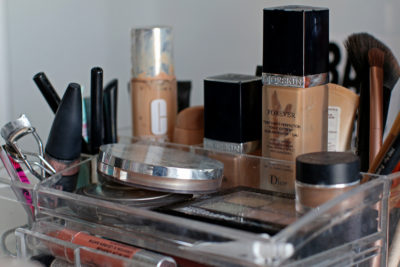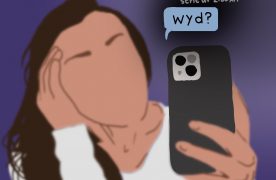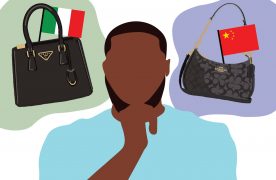
Beauty ideals have diversified over the past few decades, and Boston University School of Medicine researchers have found that beauty standards in terms of skin type and age have changed significantly.
Neelam Vashi is the director and founder of the Boston University Center for Ethnic Skin and lead researcher of the study that analyzed these changes. She said several experts from BU, Harvard University and Northwestern University looked at photos of celebrities included in the 1990 issue of People Magazine’s “World’s Most Beautiful” issue 27 years ago and compared it to the current 2017 issue.
Vashi wrote in an email that the team of researchers evaluated the beauty-indicative — including age, gender, race, skin type, hair color, eye color and visible dermatologic conditions — factors of each nominated celebrity based on a colored photo taken at the time of the respective issues.
“We found that compared to 1990, celebrities rated beautiful in 2017 were older, more often women and had a higher rate of darker skin types and mixed race,” Vashi wrote.
The dermatology professor wrote that these findings are important because they reveal that beauty standards are ever-changing and provide insight as to how dermatologists might treat their patients.
“What our society deemed beautiful in 1990 may no longer exactly represent the characteristics that we find beautiful today,” Vashi wrote. “This has implications in how we treat our dermatologic patients such as the desire to achieve a much younger versus age-appropriate look and also is a reflection of the values of our society today.”
Nazli Kibria, a sociology professor, said while the results of the study indicated that perceptions of beauty are moving in a more positive direction, she thinks more research into the topic is necessary.
“The results are positive,” Kibria said. “The people may be older, but there is maybe an emphasis on looking younger, even in terms of incorporating racial and ethnic diversity. I think we need to learn more, but it’s a good first step.”
Kibria expressed concern that the increase in racial diversity the study found might not be an accurate representation of how beauty standards have changed, but more of a superficial effort.
“I’m a little skeptical of how much all of this means because I think there are often times a sort of partial attempt to diversify that are actually quite superficial,” Kibria said. “For example, there might be a slight change in skin color but the basic ideas of beauty still remain very much dominated by Caucasian, white features.”
Kibria added that she thinks media outlets like People play an instrumental role in determining societal beauty standards.
Several Boston University students said they weren’t surprised that the study found a greater representation of race and ethnicity in 2017 relative to 1990.
Moyra Richards, a senior in the College of Arts and Sciences, said the results weren’t unexpected because she has noticed an increasing effort in the media to depict different types of women.
“Recently there’s been more pressure on advertisement companies and big corporations being more inclusive with different sizes of women and different races of women in their catalogs,” Richards said.
Richards also said, similar to Kibria, that she thinks the media plays a sizeable role in deciding what is beautiful, but that it’s “also just a reflection of society’s aspect on beauty standards.”
Jiayun Liu, a College of Engineering senior, said he thinks the media, especially social media, have the power to influence how the public perceives beauty.
“Major media has to do with representing to their audience what the beauty standards are,” Liu said. “People nowadays use different ways of communications, like Twitter and Facebook … They are influenced by the media.”
Nikta Khani, a CAS sophomore, said she thinks beauty standards have changed to incorporate a more global perspective.
“There’s a sense that more people need to be included [regardless of] sexual orientation, race, gender, age,” Khani said. “People are hearing each other’s stories more often and because of that, we’re more tolerant, and our beauty standards change to fit this more global idea of what it is to be a person.”
Khani said she thinks today’s definition of beauty is “a lot more healthy as a society and overall realistic.”












